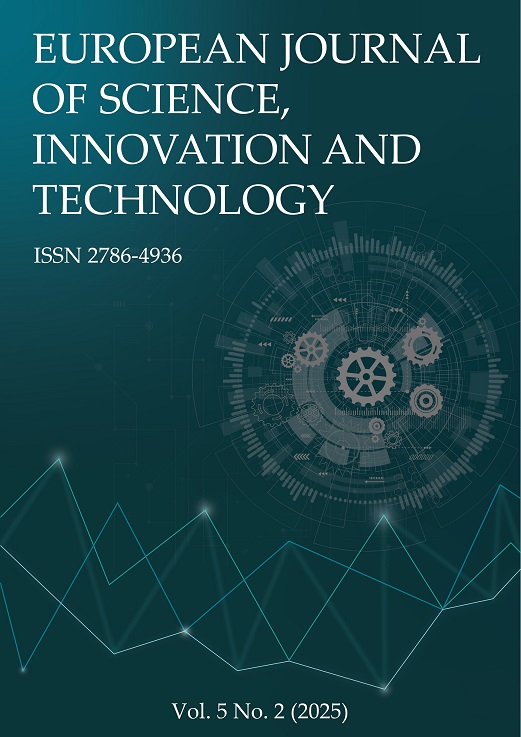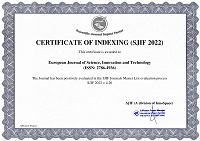Insights into the Importance of Regular Antenatal Care Visits for Improving Delivery Outcomes in Pregnant Patients: A Cross-Sectional Study
Abstract
Background: Regular antenatal care (ANC) visits are a cornerstone of preventive healthcare during pregnancy, enabling early detection and management of complications, health education, and promotion of healthy behaviors. Despite global healthcare advancements, maternal and neonatal mortality rates remain unacceptably high in many regions, particularly in low- and middle-income countries like The Gambia. This study examines the impact of regular ANC visits on maternal health outcomes at the Edward Francis Small Teaching Hospital in Banjul. Materials and Methods: We analyzed 200 antenatal medical records of women who delivered in the hospital’s obstetric unit, assessing their antenatal care visit and delivery outcomes. Results: Nearly all pregnant women (98.5%) attended ANC, with 44% making 3-4 visits, 35.5% making 5-6 visits, and 10.5% completing 7-8 visits. Postpartum hemorrhage (PPH) and preeclampsia were most prevalent among women with 1-4 ANC visits (PPH: 5.6%-2.3%; preeclampsia: 11.1%-4.5%) but absent in those with 5-8 visits. Younger women (18-25 years) and those without formal education had higher PPH rates (66.7%) compared to older (26-40 years: 33.3%) and more educated women (tertiary-educated: 0%). Conclusion: Regular ANC attendance (7-8 visits) was associated with better delivery outcomes with no risk of pregnancy related complications like preeclampsia and preeclampsia, postpartum hemorrhage. Improving antenatal care visits requires a focus on improving women's health literacy, fostering shared clinical decision-making, and ensuring patient-centered follow-up. Strengthening health systems through better data monitoring, upgraded facilities, and improved healthcare worker training is critical for delivering equitable, high-quality maternal care. Policymakers must prioritize locally adapted, evidence-based interventions to advance maternal health services in The Gambia.
References
Afulani, P. A., Buback, L., Essandoh, F., Kinyua, J., Kirumbi, L., & Cohen, C. R (2019). Quality of antenatal care and associated factors in a rural county in Kenya: an assess¬ment of service provision and experience dimensions. BMC Health Service Research, 19(1), 684.
Ala, S. H., Husain, S., & Husain, S (2021). Reasons for presenting to antenatal care clinics in a sample of Pakistani women and their knowledge of WHO antenatal care package. European Journal of Midwifery, 5(3), 43-49.
Alhassan, Y., Otiso, L., Okoth, L., Murray, L., Hemingway, C., Lewis, J. M., Oguche, M., Doyle, V., Muturi, N., Ogwang, E., Barsosio, H. C., & Taegtmeyer, M (2024). Four antenatal care visits by four months of pregnancy and four vital tests for pregnant mothers: Impact of a community-facility health systems strengthening intervention in Migori County, Kenya. BMC Pregnancy and Childbirth, 24, 224.
Allen, J., Gamble, J., Stapleton, H., & Kildea, S (2012). Does the way maternity care is provided affect maternal and neonatal outcomes for young women? A review of the research literature. Women Birth, 25(2), 54–63.
Al-Wutayd, O (2020). Inadequate and late antenatal contacts among Saudi mothers: A hospital-based cross-sectional study. International Journal of Women’s Health, 12, 731–8.
Anya, S. E., Hydara, A., & Jaiteh, L. E (2008). Antenatal care in The Gambia: missed opportunity for information, education and communication. BMC Pregnancy Childbirth, 8(1), 1–7.
Ayati, S., Vahidroodsari, F., & Talebian, M (2011). Maternal death due to Placenta Percreta with bladder involvement: a Case Report. Tehran University Medical Journal, 2011.
Beyuo, T. K., Lawrence, E. R., Oppong, S. A., Kobernik, E. K., Amoakoh-Coleman, M., Grobbee, D. E., Browne, J.L., & Bloemenkamp, K.W.M (2023). Impact of antenatal care on severe maternal and neonatal outcomes in pregnancies complicated by preeclampsia and eclampsia in Ghana. Pregnancy Hypertension, 33, 46-51.
Comfort, A. B., Juras, R. C., Bradley, S. E. K., Ranjalahy, R. J., Noeliarivelo, R. A., & Harper, C. C (2019). Do home pregnancy tests bring women to commu¬nity health workers for antenatal care counselling? A randomized controlled trial in Madagascar. Health Policy Planning, 34(8), 566–73.
Daniels‑Donkor, S. S., Afaya, A., Daliri, D. B., Laari, T. T., Salia, S. M., Avane, M. A., Afaya, R. A., Yakong, V. N., Ayanore, M. A., & Alhassan, R. K (2024). Factors associated with timely initiation of antenatal care among reproductive age women in The Gambia: a multilevel fixed effects analysis. Archives of Public Health, 82, 73.
Ebonwu, J., Mumbauer, A., Uys, M., Wainberg, M. L., & Medina-Marino, A. J. P (2018). Deter¬minants of late antenatal care presentation in rural and peri-urban communi¬ties in South Africa: A Cross-sectional study. Public Library of Science One, 13(3), 0191903. https://doi.org/10.1371/journal.pone.0191903
Ekuma, P. U., Ibiam, F. A., Ekuma, M I., Iroha, C. S., Peter, I. U., & Iroha, I. R. (2023). Evaluating the Bacteria Profile and Drug Susceptibility Patterns of Urinary Tract Infectious Pathogens in Pregnant Women in Abakaliki Metropolis, Nigeria. International Journal of Pathogen Research, 12(5), 52-62.
Gabrysch, S., Nesbitt, R. C., Schoeps, A., Hurt, L., Soremekun, S., Edmond, K., ... & Campbell, O. M. (2019). Does facility birth reduce maternal and perinatal mortality in Brong Ahafo, Ghana? A secondary analysis using data on 119 244 pregnancies from two cluster-randomised controlled trials. The Lancet Global Health, 7(8), e1074-e1087. https://doi.org/10.1016/S2214-109X(19)30165-2
Htun, N. M. M., Hnin, Z. L., & Khaing, W (2021). Empowerment and Health Care Access Barriers among Currently Married Women in Myanmar. BMC Public Health, 21(1), 1–9.
Jallow, I. K., Chou, Y. J., Liu, T. L., & Huang, N (2012). Women’s perception of antenatal care services in public and private clinics in the Gambia. International Journal for Quality in Health Care, 24(6), 595–600.
Jihad, M., Woldemichael, K., & Gezehagn, Y (2022). Determinants of late initiation for Antenatal Care follow up among pregnant mothers attending Public Health Centers at Jimma Town, South West Ethiopia, 2021: unmatched case–control study. medRxiv.
Karuga, R. N., Mireku, M., Muturi, N., McCollum, R., Vallieres, F., & Kumar, M., Taegtmeyer, M., & Otiso, L. (2019). Supportive supervision of close-to-community providers of health care: findings from action research conducted in two counties in Kenya. Public Library of Science One, 14(5), 0216444. https://doi.org/10.1371/journal.pone.0216444
Khatri, R. B., Mengistu, T. S., & Assefa, Y. (2022). Input, process, and output factors contribut¬ing to quality of antenatal care services: a scoping review of evidence. BMC Pregnancy Childbirth, 22(1), 977-979.
Kisuule, I., Kaye, D. K., Najjuka, F., Ssematimba, S. K., Arinda, A., & Nakitende, G. (2013). Timing and reasons for coming late for the first antenatal care visit by pregnant women at Mulago hospital, Kampala Uganda. BMC Pregnancy and Childbirth, 13(9), 23-56.
Kornacki, J., Olejniczak, O., Sibiak, R., Gutaj, P., & Wender-Ozegowska, E (2024). Pathophysiology of Pre-Eclampsia; Two Theories of the Development of the Disease. International Journal of Molecular Science, 25, 307.
Lecarpentier, E., Tsatsaris, V., Goffinet, F., Cabrol, D., Sibai, B., & Haddad, B (2013). Risk factors of Superimposed Preeclampsia in women with Essential Chronic Hypertension Treated before Pregnancy. Public Library of Science One, 8, 62140.
Manda-Taylor, L., Sealy, D., & Roberts, J. (2017). Factors associated with delayed antenatal care attendance in Malawi: results from a qualitative study. Medical Journal Zambia, 44(1), 17–25.
Manzi, A., Munyaneza, F., Mujawase, F., Banamwana, L., Sayinzoga, F., & Thomson, D. R. (2014). Assessing predictors of delayed antenatal care visits in Rwanda: a secondary analysis of Rwanda demographic and health survey 2010. BMC Pregnancy Childbirth, 14(1), 290-294.
Maryline Mireku, M. K., Rosalind M. M., Taegtmeyer, K. D., & Koning, O. L. (2019). Context analysis: close-to-community health service providers in Kenya. Kenya: REACHOUT Consortium; 2014.
Mbuagbaw, L., Medley, N., Darzi, A. J., Richardson, M., Habiba Garga, K., & Ongolo-Zogo, P (2015). Health system and community level interventions for improving antenatal care coverage and health outcomes. Cochrane Database System Reviews, 1(12). https://doi.org/10.1002/14651858.CD010994.pub2
Mongraw-Chaffin, M. L., Cirillo, P. M., & Cohn, B. A (2010). Preeclampsia and cardiovascular disease death: prospective evidence from the child health and development studies cohort. Hypertension, 56, 166–71.
Nie, X., Xu, Z., & Ren, H. (2024). Analysis of risk factors of preeclampsia in pregnant women with chronic hypertension and its impact on pregnancy outcomes. BMC Pregnancy and Childbirth, 24, 307.
Nigatu, S. G., & Birhan, T. Y. (2023). The Magnitude and Determinants of delayed initiation of antenatal care among pregnant women in Gambia; evidence from Gambia demographic and health survey data. BMC Public Health, 23, 599.
Paulson, K. R., & GBD 2019 Under-5 Mortality Collaborators. (2021). Global, regional, and national progress towards sustainable development goal 3.2 for neonatal and child health: all-cause and cause-specific mortality findings from the global burden of Disease Study 2019. The Lancet, 398(10303), 870–905.
Poon, L. C., Shennan, A., Hyett, J. A., Kapur, A., Hadar, E., Divakar, H., ... & Hod, M. (2019). The International Federation of Gynecology and Obstetrics (FIGO) initiative on preeclampsia (PE): a pragmatic guide for first trimester screening and prevention. International Journal of Gynaecology and Obstetrics, 145(Suppl 1), 1. https://doi.org/10.1002/ijgo.12802
Ramotsababa, M., & Setlhare, V (2021). Late registration for antenatal care by pregnant women with previous history of caesarean section. African Journal of Primary Health Care & Family Medicine, 13(1), 1–9.
Robillard, P., Dekker, G., Scioscia, M., & Saito, S (2022). Progress in the understanding of the pathophysiology of immunologic maladaptation related to early-onset preeclampsia and metabolic syndrome related to late-onset preeclampsia. American Journal of Obstetrics and Gynecology, 226(2), 867-875.
Sibai, B. M., Caritis, S. N., Thom, E., Klebanoff, M., McNellis, D., Rocco, L., ... & National Institute of Child Health and Human Development Network of Maternal-Fetal Medicine Units. (1993). Prevention of preeclampsia with low-dose aspirin in healthy, nulliparous pregnant women. New England Journal of Medicine, 329(17), 1213-1218.
Somé, A., Baguiya, A., Coulibaly, A., Bagnoa, V., & Kouanda, S. (2020). Prevalence and factors associated with late first antenatal care visit in Kaya Health District, Burkina Faso. African Journal of Reproductive Health, 24(2), 19-26.
The Standard New (2019). Conditions at the Edward Francis Small Teaching Hospital.https://standard.gm/conditions-at-the-edward-francis-small-teaching-hospital/
Tolefac, P. N., Halle-Ekane, G. E.,Agbor, V. A., Sama, C. B., Ngwasiri, C & Tebeu, P. M (2017). Why do pregnant women present late for their first antenatal care consultation in Cameroon? Maternal Health Neonatology Perinatology, 3, 29.
UNICEF. (2019). Healthy Mothers, Healthy Babies: Taking stock of maternal health. New York. Retrieved from: https://data.unicef.org/resources/healthymothers-healthy-babies/
United Nations. (2016). The sustainable development goals report 2016. United Nations Publications. Retrieved May 20, 2021, from https://unstats.un.org/sdgs/report/2016/The%20Sustainable%20Development%20Goals%20Report%202016.pd
USAID SQALE. (2019). Sharing knowledge and experience on quality improvement for community health and sustaining change: USAID SQALE Learning Event Report 2019. Nairobi, Kenya: USAID SQALE.
Warri, D., & George, A (2020). Perceptions of pregnant women of reasons for late initiation of antenatal care: a qualitative interview study. BMC Pregnancy Childbirth, 20(1),70. https://doi.org/10.1186/s12884-020-2746-0
World Health Organization. (WHO). (2020). World Health Organization antenatal care randomized trial: manual for the implementation of the new model. 2002 [cited 2020 Nov 7]. p. 1–42. Retrieved from: https://apps.who.int/iris/bitstream/handle/10665/42513/WHO_RHR_01.30.pdf?sequence=1.
WHO, UNICEF U, TWB. (2019). Trends in Maternal Mortality: 2000 to 2017. Geneva. WHO. WHO recommendations on antenatal care for a positive pregnancy experience. Geneva; 2016. Retrieved from: https://www.who.int/reproductivehealth/publications/maternal_perinatal_health/anc-positivepregnancy-experience/en/.
World Health Organization (WHO). (2012). Maternal mortality. Fact sheet No. 348. Geneva: World Health Organization.
World Health Organization (WHO). (2018). WHO recommendations on antenatal care for a positive pregnancy experience: summary: highlights and key messages from the World Health Organization's 2016 global recommendations for routine antenatal care. World Health Organization.
World Health Organization (WHO). (2020). Antenatal care recommendations for a positive pregnancy experience Nutritional interventions update: Multiple micronutrient supplements during pregnancy. In WHO antenatal care recommendations for a positive pregnancy experience Nutritional interventions update: Multiple micronutrient supplements during pregnancy (p. 68-68).
Xiao, H. Y., & Wang, Y. M (2019). Clinical Value of Nursing Intervention for Diabetic Nephropathy Based on Maslow Hierarchy Theory. China Journal of General Practice, 17, 1065–8. http://doi.org/10.16766/j.cnki.issn.1674-4152.000864
Yaya, S., Oladimeji, O., Oladimeji, K. E., & Bishwajit, G. (2020). Prenatal care and uptake of HIV testing among pregnant women in Gambia: A Cross-sectional study. BMC Public Health, 20, 485-489.
Yu, S., Ren, Q., & Wu, W (2015). Effects of losartan on expression of monocyte chemoattractant protein-1 (MCP-1) in hyperuricemic nephropathy rats. Journal of Receptors and Signal Transduction, 35, 458–61.
Copyright (c) 2025 Charity Nneka John-Emaimo, Alice John Emaimo, Ikemesit Udeme Peter

This work is licensed under a Creative Commons Attribution 4.0 International License.


 ISSN
ISSN 











